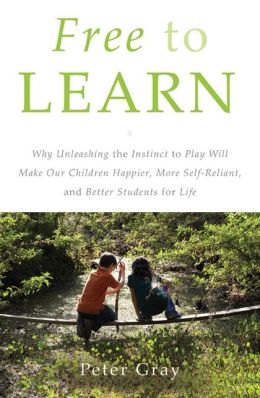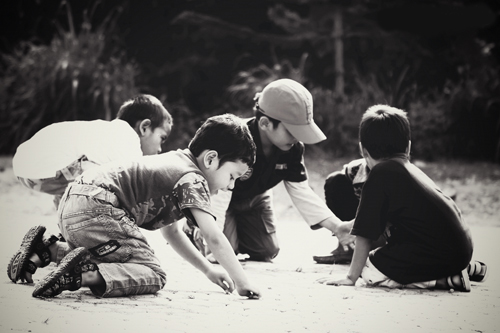To better understand why, he looked at it from an evolutionary perspective. For the vast majority of human history, people led a hunter-gatherer existence and evolved to thrive in that milieu. He surveyed anthropologists who had studied surviving human-gatherer societies and was struck by the similarities between how children learned in those groups and at Sudbury Valley. The school’s results now made sense to him.
“What became clear is that children are naturally motivated to acquire culture,” he says. “They do this largely by playing with other children, thereby rehearsing the necessary skills, consolidating them, and trying out the values of the culture. All this led me to conclude that children can educate themselves and are good at doing so if the conditions are right.”
That meant a community of age-mixed children and caring and knowledgeable adults; an expectation that children can be trusted and put in charge of their educations; and opportunities to play freely with the tools of the culture (today, this would include things like books, computers, and cooking and woodworking materials).
Kids learn social skills best by interacting with other kids, and a wide age range (age four and up) allows older kids to “create ‘scaffolds’ for the younger ones, bringing them up to higher skill levels,” Gray notes. “In turn, the older kids gain a sense of maturity and learn to be nurturing. Explaining things also helps them consolidate and understand the information better.”
Adults serve as resources and administrators for the learning community. Gray says a certain minimum number of adults are needed to represent different skills and personalities, but that no formal training is necessary. The adults just need to be “very responsible and aware of the broader picture, and be seen by kids as honest and reliable individuals who talk to them as real people,” he says.
LEARNING THROUGH LIFE
Learning unfolds organically at Sudbury Valley, where classes -- when they occur at all -- are organized upon request and are optional. “But for the most part,” Gray says, “their learning is just through life, which for a child means exploring and doing interesting things. Self-directed learning really just means self-directed life, a consequence of which is learning what you need to know to live life.”
 One student, who went on to become a successful machinist and inventor, had spent much of his time tinkering with things to see how they worked. Another, who became the captain of a cruise ship, had played a lot with toy boats and then real ones. Yet another, now a high-fashion pattern maker, had made clothes for her dolls and her friends.
One student, who went on to become a successful machinist and inventor, had spent much of his time tinkering with things to see how they worked. Another, who became the captain of a cruise ship, had played a lot with toy boats and then real ones. Yet another, now a high-fashion pattern maker, had made clothes for her dolls and her friends.
The same principles apply to both abstract and concrete learning. “We live in a numerate and literate culture,” Gray says. “You can’t avoid learning arithmetic -- you learn it in order to measure things, make change, tell time. Many games involve adding, subtracting and dividing. So the kinds of numerical skills that are important for life, you learn through life.” Kids who have a deeper interest in the subject readily apply themselves to learn higher math, as did one Sudbury Valley graduate who went on to earn a PhD in the subject.
“Complex material can be learned by reading manuals, books or web sites,” Gray says. “Kids who want to know about rocket science can learn 95 percent of what they need to learn that way. They need a teacher only when they come to some problem they can’t solve and have a very pointed and specific question to ask. Then they can ask an adult, perhaps an expert they find online, who can give advice. People feel good about sharing their knowledge if someone really wants to know. And self-directed learners tend to feel confident going to adults they don’t know and asking for help.”
Gray says two things led him to conclude that self-directed learning comes naturally to all children (barring exceptionally rare and serious brain disorders): They all start out as self-directed learners when they’re infants and toddlers, and a wide variety of kids have gone on to thrive at Sudbury Valley.
“Kids who like structure schedule their days more, or take classes; other kids may spontaneously move from one thing to another and see where it takes them,” he says.



 One student, who went on to become a successful machinist and inventor, had spent much of his time tinkering with things to see how they worked. Another, who became the captain of a cruise ship, had played a lot with toy boats and then real ones. Yet another, now a high-fashion pattern maker, had made clothes for her dolls and her friends.
One student, who went on to become a successful machinist and inventor, had spent much of his time tinkering with things to see how they worked. Another, who became the captain of a cruise ship, had played a lot with toy boats and then real ones. Yet another, now a high-fashion pattern maker, had made clothes for her dolls and her friends.